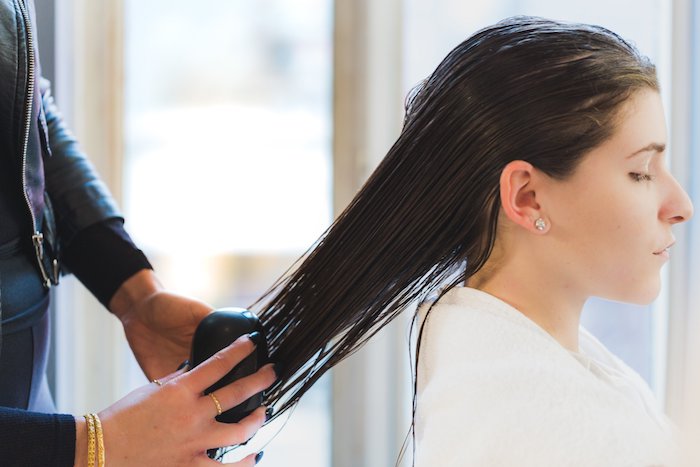
There it goes, more hair down the drain. Ahhh! If you are like me, I tend to shed extra hair cyclically, and my particular time is post Summer, into Fall. And what about stress? As the emotional toll of concern over our health and changing lives builds, are you feeling stressed and overwhelmed? What's normal, and when should you see your doctor? I recently had the opportunity to chat with our favorite naturopathic physician, Dr. Fisel about the subject that causes so many people so much concern.
1. How much hair loss is considered normal and when should we be concerned?
"Hair loss in women is a very common clinical complaint, and often leads to severe emotional distress. In most cases, hair loss is only temporary, and not a sign of any serious underlying conditions. Signs to pay attention to that could indicate more serious underlying causes of hair loss include the following: Sudden, rapid loss of hair; The development of patchy bald spots; Scarring or scaling of the scalp; Full-body hair loss. Another clue that something more serious is going on would be a positive hair pull test. When gently pulling on a bundle of roughly 60 hairs between your index finger and thumb, there should be <10% shedding. If more shedding than this occurs, a visit to the doctor may be warranted."
2. Do we shed more hair at certain times of the year?
"Researchers have determined that hair loss is more common in late summer and fall, but the reason isn’t entirely clear. One theory is that we are programmed to have thicker hair in the winter to provide warmth, which we then shed in the warmer months. Age is also an important variable, as roughly two-thirds of post-menopausal women complain of excessive hair loss, compared to 10% of pre-menopausal women."
3. What causes excess hair loss? Stress, vitamin deficiency, health concerns or diseases?
"Androgenetic alopecia, or female pattern hair loss (FPHL), is the most common cause of excessive hair loss in women. This has to do with changes in hair follicle size, usually as a result of age-related hormone changes. Other causes that need to be considered include the following: PCOS, insulin resistance, and other underlying causes of excess androgen levels; Telogen effluvium, which is usually a more temporary shedding of hair that’s brought on by stress or medication changes; Alopecia Areata, which can be the result of underlying autoimmune reactions; Hypothyroidism; nutrient deficiencies, particularly iron and trace minerals; Psoriasis, Seborrheic Dermatitis, and lichen planopilaris are all dermatological conditions that can affect the scalp, leading to hair loss."
4. Anything that could be done to slow it down?
"Of course, when treating hair loss, it’s always important to treat the underlying cause. Replacing nutrient deficiencies is a top priority, along with correcting any underlying hormonal imbalances, when present. Conventionally, the most common treatment for FPHL is the topical drug Minoxidil, along with drugs that help to block excess androgens, such as spironolactone. Natural medicine also has a number of useful therapies to offer, especially when conventional treatments are ineffective. Biotin is one of the most well known natural treatments, and often works best when combined with other trace minerals, including zinc, silica, and manganese. Addressing the body’s response to stress is a top priority, as this can have a positive impact on overall hormone imbalances. Adaptogenic herbs, such as American ginseng and nettles, along with a good quality B-complex, can be beneficial for this purpose. There are also herbs that can help to block excess androgens, with saw palmetto and green tea being common examples. Topically, research has proven the benefits of emu oil, especially when combined with essential oils like rosemary, thyme, and lavender. Daily hair washing is also recommended, as this helps to eliminate excess sebum production from the hair follicle. With a combination of these therapies, it’s not unrealistic to expect an improvement in FPHL. "
Thank you Dr. Fisel, for this valuable information. You can find Dr. Fisel HERE.
From an ingredient standpoint, we recommend avoiding shampoo and conditioner products with harsh surfactants like Sodium Lauryl Sulfate. Another notable ingredient to avoid is: Methylisothiazolinone. It is a cosmetic preservative used a lot in shampoos and leave-on products. It actually has been blamed for causing hair loss! It can cause dermatitis, and lab studies on the brain cells of mammals suggest that it may also be neurotoxic, and is a top allergen.
To shop for hair products that are gentle, effective and made with the finest natural/organic ingredients, visit our collection HERE.


